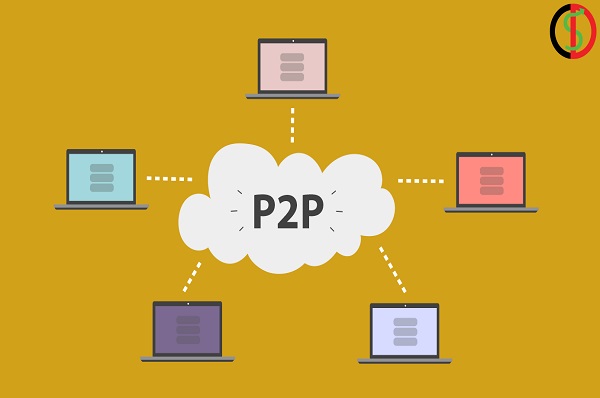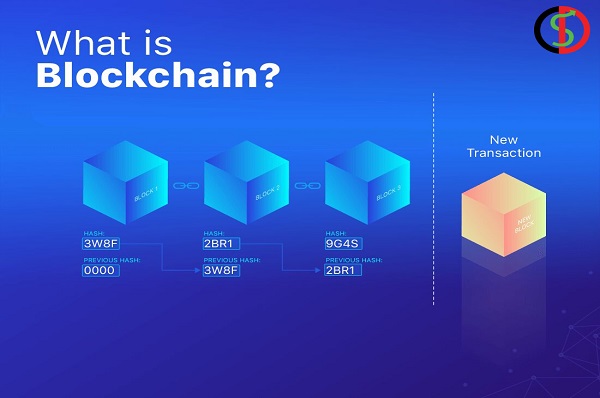If you have used the world of the Internet and are one of its users, you have no doubt come across the types of networks that are being talked about today. In this article, we will look at peer-to-peer (P2P) networks. Therefore, please follow digital currency signal until the end of the article. Using these networks to download files and content is very common among Internet users. Although using a peer-to-peer network is one of the most common ways to download files, few people are aware of the technical characteristics used in P2P networks.
What is a peer-to-peer network and what does it mean?
A peer-to-peer network, abbreviated as P2P, is a network of many computers connected over the Internet using a distributed infrastructure. Each member of this network is called a node. Nodes are usually defined with the same power and responsibility. Files are shared between network nodes without the need for a central server. When a node is a client, it receives files from other nodes on the network. But when the same node acts as a server, it is the source of data upload. This means that other nodes can download files using the server node. In practice, each node in a user-to-user network can be both a server and a user at the same time.
What are the types of peer to peer networks?
Peer-to-peer networks can be classified according to their architectural differences. The three main types are described below.
1.Unstructured P2P networks
In an unstructured P2P network, nodes connect and communicate randomly. Because nodes frequently connect and disconnect from the network, these systems are suitable for high-speed applications. For example, a social platform based on an unstructured P2P network can benefit from the fact that users can join and leave the network frequently. Creating such networks is easy. However, they require a lot of CPU and memory because search requests are sent across the entire network. So if, for example, only 5% of computers have what you’re looking for, it may take some time.
2.Structured P2P networks
On the other hand, the network is structured in such a way that nodes can be searched efficiently, even if the data is not used on a large scale. In most cases, these networks implement a distributed hash table (DHT) that allows nodes to look up data using hash functions. Although structured networks can route traffic more efficiently, they require higher setup and maintenance costs and are more centralized.
3.P2P Hybrid Network
A hybrid network is a combination of peer-to-peer and client/server models on one platform. The network uses a directory server that contains information about the location of resources in the center and uses this server for searches. The centralized execution provided by the structured network and the node parity provided by the unstructured network are responsible for the balance of the hybrid network. In comparison, this type of network tends to perform better than its counterparts because some searches require centralized operations, but can also benefit from decentralized networks.
Application of P2P Networks in Blockchain
As we all know, the concept of blockchain was first introduced in 2008 as part of the Bitcoin proposal. Bitcoin is a digital currency designed to solve the age-old problem of trust in transactions .Satoshi Nakamoto defined Bitcoin as a “peer-to-peer electronic money system.” The creator of Bitcoin wanted to create a P2P digital currency without any bank involvement. Blockchain uses the power of the P2P network to record transactions in a shared and trusted ledger. With distributed ledger technology, transactions are stored as immutable digital blocks. Information about the sender, the recipient and the time of the transaction is stored in each block.
Blockchain is not controlled by any centralized organization and only individuals can verify the validity of transactions within it. This technology eliminates the need for trust in transactions. Blockchain technology is a new way to store and manage distributed data like a digital ledger. The history of all works and activities recorded in this book is public and available to everyone.
Benefits of P2P or peer-to-peer networking?
- No need to buy and maintain expensive servers.
- Each user manages his own computer and there is no need for a network administrator.
- It is easy to use, users do not need special technical knowledge.
- This type of network is used in homes and small businesses.
- Network traffic will be less compared to traditional networks.
- Even if one of the computers in the network is turned off, the network continues to work and does not depend on the others.
- In fact, to destroy the network, you must destroy all peers in the network.
- Adding new peers to the network is very easy.
✅conclusion
If you are planning to enter the digital currency market, then you should be familiar with the basics of this market. As already mentioned, one of these concepts is peer-to-peer or P2P network. With the growing development of cryptocurrencies, it is more important to know these concepts. We found that the p2p network has a decentralized architecture and is used in trading platforms and core blockchain. Also, the peer-to-peer network and blockchain allow the exchange of digital money without the presence of a middleman or a central company. If you have any other questions about the peer-to-peer network or blockchain technology, please post them in the comments section so we can answer them.
FAQ
What is a peer-to-peer network?
peer-to-peer network, abbreviated as P2P, is a network of many computers connected over the Internet using a distributed infrastructure.
What are the types of peer to peer networks?
1.Unstructured P2P networks 2.Structured P2P networks 3.P2P Hybrid Network
What is the role of P2P networks in blockchain?
The peer-to-peer network architecture allows blockchain networks like Bitcoin to transfer global value, currency or other assets between all users without the need for a central server or intermediary. Also, people around the world can participate in the process of verifying and validating blocks and act as one of the nodes of these networks.
How does a peer-to-peer network work?
A peer-to-peer or P2P network is a model of a decentralized communication network consisting of a group of devices (nodes) that store and share files together. In P2P networks, each node has tasks and performs them independently.





